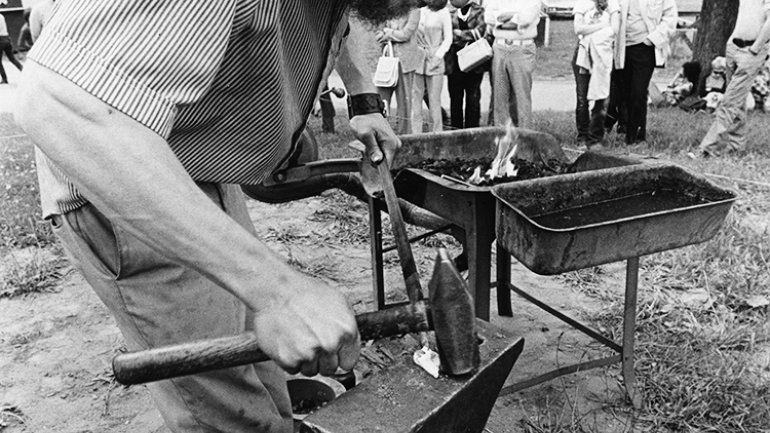The Rhinebeck Revolution
The Rhinebeck Revolution
Nestled in the Hudson River Valley 90 miles north of New York City is the charming town of Rhinebeck. Part of a National Historic Landmark District, the town, with a population hovering between 5,500 and 8,000 in recent decades, has always exuded tranquility. In the summer of 1973, however, Rhinebeck took the national arts stage when it hosted an American Craft Council fair that would forever change how the organization ran its shows – and the way many people considered craft.
Officially known as Northeast Craft Fair 8, the Rhinebeck show was organized by the Northeast Regional Assembly of the American Crafts Council (as it was known then). This group, composed of ACC volunteers, began the fair in Vermont in 1966. In launching the event, the group was in essence experimenting, trying something novel in the craft world: an artist-run fair, separate from galleries and dealers, where makers set the prices, displayed their work, and promoted fellow craftspeople.
The inaugural show in Stowe featured 80 exhibitors, with some artists selling their work out of cars and tents, and an outdoor ox roast. After 1966, interest grew steadily, and the event had to move twice during its years in Vermont to accommodate larger crowds and provide better facilities. By 1972, the Northeast Craft Fair had grown so much that organizers could find no suitable location in Vermont. They began searching for better venues in other states, eventually choosing the Dutchess County Fairgrounds in Rhinebeck. The selection did prompt a major concern, however: Would moving the site again – and to a new state – slow the event’s momentum?
Fair organizers need not have worried, as the result was far better than they expected. Craft Fair 8 shattered records; 570 artists exhibited, and more than 30,000 people attended – 8,000 more than the previous show and six times larger than the population of Rhinebeck. Total revenue for wholesale and retail was $825,000, a 50 percent increase over business the year before.
The additional real estate and improved facilities at the Dutchess County Fairgrounds allowed more room for exhibitors to set up booths indoors or outdoors, and provided space for artists in various mediums to conduct demonstrations for audiences. Craft Fair 8 also introduced Awards of Merit, presented to selected artists for outstanding work and booth design – an idea that lives on as the Awards of Excellence at current ACC shows.
The Rhinebeck fair was also the first ACC show to grant equal consideration to artists living outside of the Northeast; previously, regional craftspeople took priority. As a result, exhibitors represented the South and Midwest as well.
What began as a local, grassroots event just seven years earlier had emerged as the largest contemporary craft show in the country. Shows kept growing after 1973 and became a mainstay component of the ACC’s mission to provide worthwhile venues for artists; today’s ACC shows in Atlanta, Baltimore, St. Paul, and San Francisco continue to draw crowds and promote craft as a profession.
As we approach the 2014 show season, it’s worth remembering that these national events started with a small, passionate group looking for a little more space for their community fair.
Colin Nelson-Dusek is the ACC’s education coordinator.

